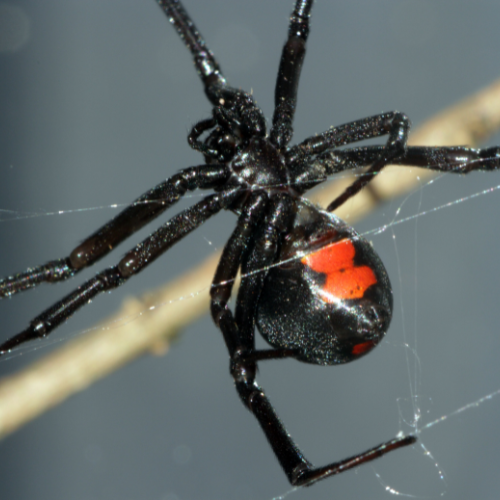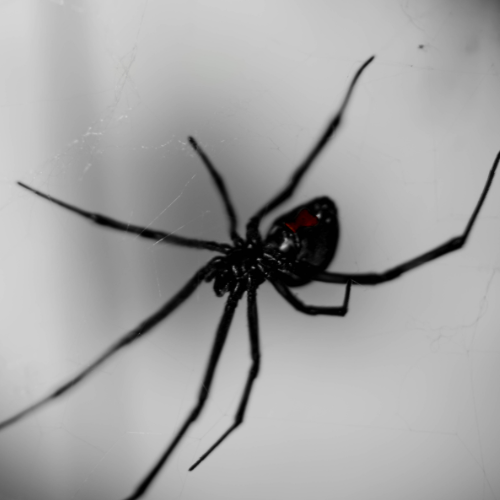Black Widow Spider
Introduction to
The black widow spider, notorious for its potent venom and distinctive appearance, is a common pest in many parts of the world. Recognized by the characteristic red hourglass marking on its abdomen, this spider is often found in dark, undisturbed areas around homes. Although their bites are rarely fatal, they can cause severe pain and medical complications. Understanding how to identify, prevent, and professionally manage black widow spiders is crucial for maintaining a safe living environment. This article explores the recognition, biology, habits, prevention, and professional handling of black widow spiders.
Recognition
The black widow spider is easily identified by its shiny, black body and distinctive red hourglass marking on the underside of its abdomen. Female black widows are larger than males, measuring about 1.5 inches in length, including the leg span. Males are smaller and less venomous, with lighter and more varied coloring, often with red or white spots on their backs. The spider’s web is irregular and tangled, typically found in dark, undisturbed locations such as basements, garages, and sheds. Recognizing these characteristics can help in promptly identifying and addressing a potential black widow presence.
Biology
Black widow spiders belong to the genus Latrodectus and are known for their potent venom, which contains neurotoxins that affect the nervous system. Females are the most venomous, while males and juveniles pose less of a threat. After mating, female black widows may consume the male, a behavior that contributes to their name. Females can produce several egg sacs over their lifetime, each containing hundreds of eggs. The spiderlings disperse shortly after hatching, and only a few survive to adulthood. Black widows primarily feed on insects, using their venom to immobilize prey before consuming it.
Habits
Black widow spiders are nocturnal and prefer to spin their webs in dark, sheltered areas. They are commonly found in garages, basements, woodpiles, and under outdoor furniture. These spiders are not aggressive and will only bite in self-defense when they feel threatened or are accidentally disturbed. A bite from a black widow can cause severe pain, muscle cramps, and other systemic symptoms, requiring medical attention. Black widows are solitary creatures, and their webs are often the first indication of their presence in an area.
Prevention
Preventing black widow spider infestations involves regular cleaning and reducing clutter in and around the home. Seal cracks and crevices in foundations, windows, and doors to prevent spiders from entering. Store firewood and other materials away from the house and off the ground. Use gloves when handling items that have been in storage for a long time. Regularly check and clean areas where spiders are likely to build webs, such as under eaves, in sheds, and in garages. Insecticides can also be used as a preventive measure in areas prone to infestations.
Professional
If you suspect a black widow spider infestation, it is advisable to seek professional pest control services. STL Pest Control offers specialized treatment plans to manage and eliminate black widow spiders. Their trained technicians will conduct a thorough inspection to identify infested areas and apply targeted treatments to eradicate the spiders. They also provide ongoing monitoring and preventive measures to ensure that the infestation does not recur. Professional intervention is crucial for safely managing black widow spiders and minimizing the risk of dangerous bites.



Our Office









